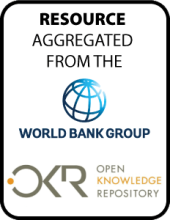Land Library
Welcome to the Land Portal Library. Explore our vast collection of open-access resources (over 74,000) including reports, journal articles, research papers, peer-reviewed publications, legal documents, videos and much more.
/ library resources
Showing items 37 through 45 of 1567.Rwanda's completion, in 2012/13, of
a land tenure regularization program covering the entire
country allows the use of administrative data to describe
initial performance and combine the data with household
This Systematic Country Diagnostic (SCD) is designed to assess the key constraints and opportunities facing Mozambique as it strives to sustain robust growth and macroeconomic stability while accelerating poverty reduction and promoting greater economic inclusiveness.
Agriculture in Uzbekistan is almost entirely dependent on irrigation.
The LPI has provided valuable
information for policy makers, traders, and other
stakeholders, including researchers and academics, on the
role of logistics for growth and the policies needed to
This Systematic County Diagnostics is
organized into six parts. The first part presents a brief
overview of the country’s recent socio-political and
economic context. The second part examines the links between
This Systematic Country Diagnostic (SCD)
explores how Uzbekistan can consolidate its recent
achievements and accelerate progress on the twin goals of
eradicating extreme poverty and promoting shared prosperity.
This Country Partnership Framework (CPF)
for Tunisia, prepared jointly by International Bank for
Reconstruction and Development (IBRD), International Finance
Corporation (IFC) and Multilateral Investment Guarantee
Cameroon is a lower-middle income country with social indicators and levels of poverty which are below those for comparator countries. Large and rising inequalities between north and south, inefficiencies in public resource allocation and an adverse business environment explain this.
Governments must decide how to allocate
limited resources for infrastructure development,
particularly since financing gaps have been projected for
the coming decades. Social cost-benefit analysis provides




